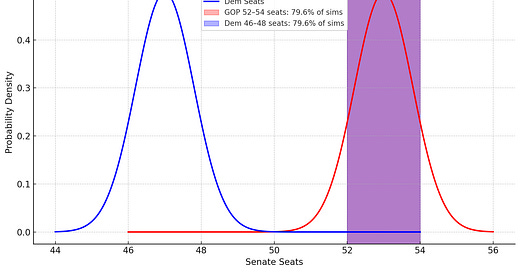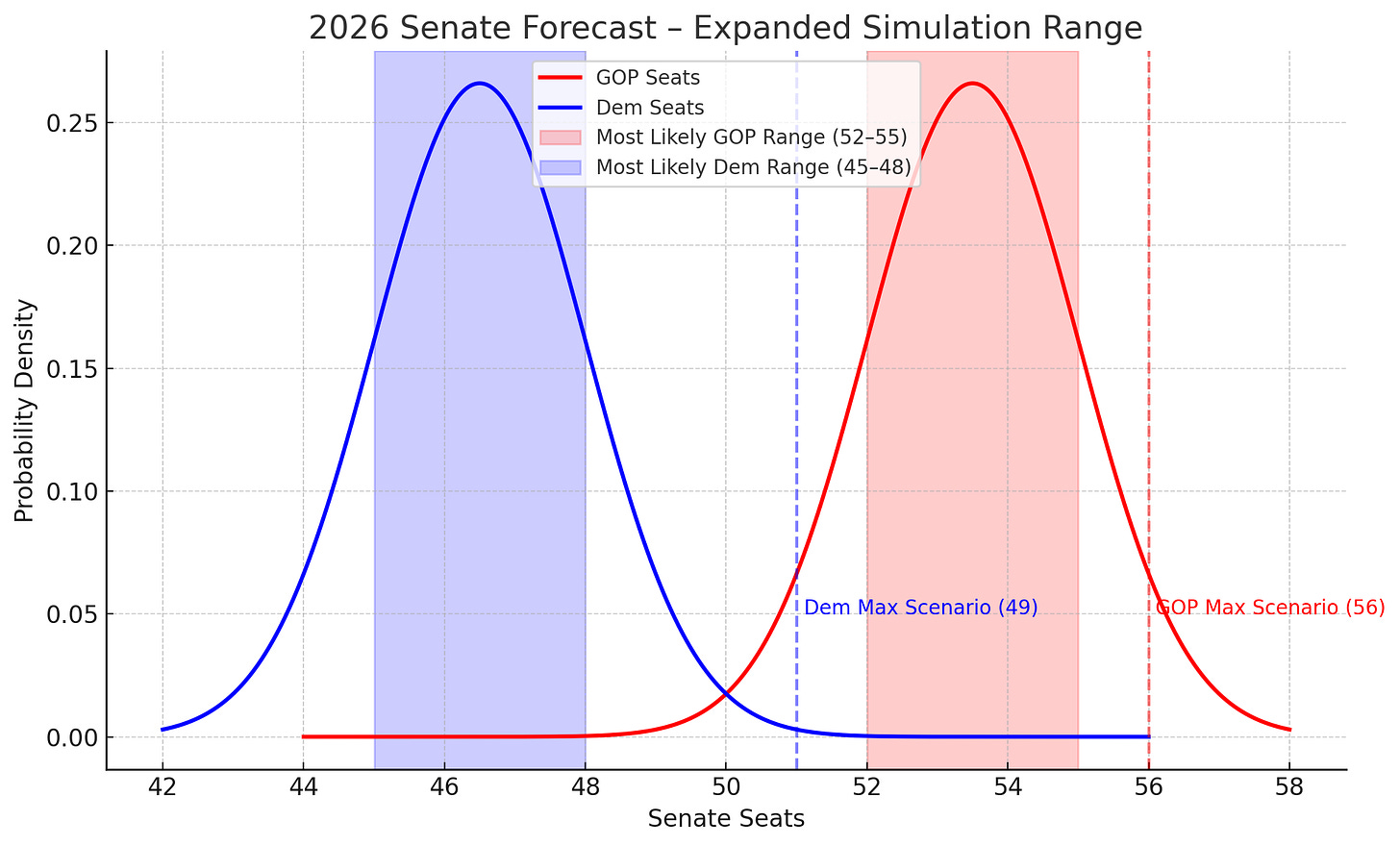Inside the Early Senate Forecast: The Curve Widens, the Stakes Rise
The GOP holds the advantage, but the expanded forecast leaves room for surprise on both sides
Our first pass at the 2026 Senate forecast painted a clear picture: the Republican Party held a structural advantage, and the political environment appeared relatively stable. The model reflected that. Most outcomes were tightly centered around 53 to 54 GOP seats. Volatility was limited. The battlegrounds—Michigan, Georgia, New Hampshire, North Carolina, and Maine—were treated as competitive but leaning predictably.
That was what we called a high-confidence forecast: a narrow bell curve, tightly stacked around the mean.
But elections—like history—rarely move in straight lines.
In our second simulation, we widened the lens. This version allows for what both parties know in their gut: surprises happen. Could the GOP run the table and climb to 56 seats? Yes, it’s statistically possible. Could Democrats dig in and hold the line at 49? Possible, though less probable. The shape of the curve changed—not because the center shifted, but because the range of outcomes grew.
What changed?
The peak stayed put.
The curve widened.
The most likely outcome remains Republican control, clustered around 53–54 seats, with Democrats around 46–47. But this version of the model includes the long shots—those rare but plausible electoral nights when one side defies the polls, the map, and expectations.
Reading the Curve Right
The peak of the chart rests near 0.25. How does that line up with our claim that roughly 80% of outcomes fall within a narrow band? The answer lies in understanding probability density:
The peak is not the probability.
The area under the curve tells the story.
And in this case, nearly 80% of simulations fall within the shaded bands of GOP 52–54 and Democrat 46–48.
This is what rigorous modeling requires—not just identifying the likely winner, but recognizing the full range of possibility.
We’ll keep updating the model as more data rolls in. But for now, the message is plain: The Republican Party enters 2026 with the upper hand. But the road ahead still holds contests, currents, and turns that no algorithm can fully predict.






Love the chances of an increased majority with Kemp & Sununu joining (potentially) the race. Just wish we had more hardcore & unwavering conservatives joining the senatorial ranks. Some effective Thomas Massie’s in the senate who could truly steer the legislature away from the uniparty would be great.
I know it’s early but are there any primary challenges that you are tracking? Louisiana or Texas senatorial races against Cassidy or Cornyn?